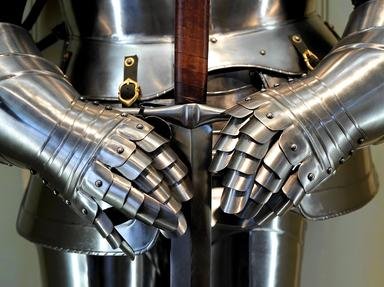Quiz Answer Key and Fun Facts
1. The brilliant inventions of the ancient scientist, Archimedes, are still well-known today, even though modern experts are unsure of how they were constructed and used. Which of the following was said to have been used to defend seaward walls from naval attack?
2. Which simple metal device was used to impair the movement of people and animals during ancient battles?
3. At which of the following famous island sieges was the Helepolis, a type of siege tower, first used?
4. Although the Egyptians are credited with turning the war chariot into an awesome fighting machine, they did not actually invent it. Which ancient people are usually credited with introducing the ancient Egyptians to the war chariot?
5. The use of Greek fire in battle was kept such a tight secret that even today scholars are uncertain as to how it was exactly made. Which ancient empire first used this incendiary weapon?
6. There is much discussion among historians concerning who invented the repeating crossbow. By what alternative name, however, that gives credit to an ancient tactician, is it also known?
7. Which of the following siege engines, commonly associated with medieval warfare, used men pulling on ropes to launch projectiles?
8. Which of the following ancient missile launchers was also called a bolt thrower?
9. The invention of the composite bow was an important innovation for ancient archers. It was originally made with a combination of wood, sinew, and which other substance?
10. The invention of gunpowder in China has been well-documented, however, can you choose the correct chemical compound that was used as the oxidizer for the fuel?
Source: Author
ponycargirl
This quiz was reviewed by FunTrivia editor
bloomsby before going online.
Any errors found in FunTrivia content are routinely corrected through our feedback system.

